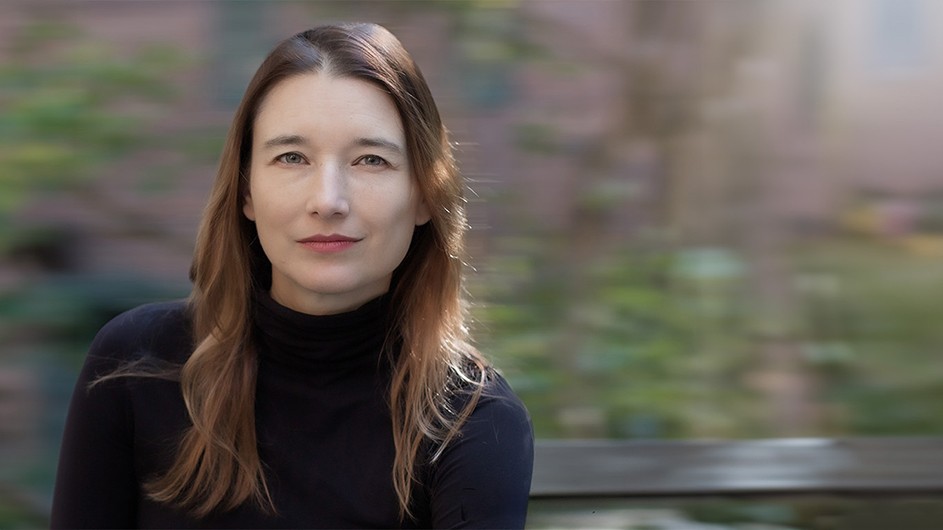A Theater Artist Explores How Performance Can Mobilize Political Action
María José Contreras Lorenzini works at the intersection of research and art, in an urban context.

María José Contreras Lorenzini, who teaches in the Theatre Program at School of the Arts, is a Chilean, multidisciplinary artist. She works at the intersection of research and art, exploring the relations between embodied practice, performance, memory, and urban space. Her projects involve the transformation of civic and academic spaces by facilitating collaboration and collective creativity.
Using a wide range of formats including devised theater, site-specific performance, urban interventions, and durational performances, Contreras Lorenzini’s artwork has been presented in major venues and festivals in the U.S., Canada, France, Italy, Ukraine, and throughout South America. In addition to numerous articles published in several languages, she has co-edited two interdisciplinary volumes, Cadáver exquisito: tres experiencias de investigación performativa en Chile and Women Mobilizing Memory.
Contreras Lorenzini talks about her scholarship and teaching with Columbia News, along with her current projects, her students, and the vitality of New York.
What is the single unifying thread that runs through your broad body of research?
As an artist-scholar, my work encompasses creative practice-performance, dramaturgy, and theater, as well as research in the field of performance studies. I teach in the dramaturgy concentration of the Theatre Program because dramaturgy—the theory and practice of dramatic composition—is a unique field that allows for "thinking practice" and "practice thinking" in the context of theater-making.
What unifies my work is, in broad terms, an engagement with dramaturgies of resistance. I am interested in exploring and devising ways in which creative embodied practices can mobilize political action.
What are you working on now?
My next performance piece, Antigone Adrift, commissioned by the Centre Pompidou in Paris, will be presented in April. Antigone Adrift poses the urgent question: Who are today's Antigones? What are they fighting for? As the director, I've invited activists to tell their stories on stage. The performance will reflect, through the activists' bodies and testimonies, contemporary struggles for justice. What excites me about this performance is the challenge of creating a dramatic piece that articulates activists' real-life experiences with the story of Antigone.
I am also finalizing my book, Conjuring Hope: Ecologies of Protest Performances in Chile, 2011-2022, in which I discuss a series of demonstrations in downtown Santiago, Chile. Conjuring Hope argues that protest performances emerge in intricate systems anchored in a particular place. I examine the corporeal resonances and rhythms of bodies on the streets, which—as I hope to demonstrate—foster communities that conjure and rehearse a more hopeful future.
How did growing up under a dictatorship in Chile inform your creative practice?
My passion for theater and performance stems directly from my childhood experiences living under a dictatorship. Growing up in a profoundly oppressive regime in Chile, I learned to be careful about what I said and what I did—words and actions were dangerous. As I got older, I discovered that on stage, those words and actions could elude the scrutiny of censors or oppressors, but still retain their potential to pose a threat, a threat to those in power. In my work as an artist, I still hold that promise of social transformation; the political status of my work goes beyond its content. The work also entails its modes of production, ethos of collaboration, and engagement with inclusive workspaces.
What are you teaching this semester?
Cartographies of Resistance, a course on contemporary Latin American theater and performance. Our cases include a wide spectrum of practices from conventional theater to street performances. We study how artists and collectives in Latin America have used their craft to mobilize political action, and we discuss how these performances, operating beyond theater buildings and stages, expand a restrictive, Western concept of theater.
I am also teaching Antigone's Dramatic Endurance, in which we study a dozen adaptations of Sophocles' Antigone. The aim is to understand how each adaptation re-proposes, twists, or subverts Sophocles' dramatic structure. In an effort to decolonize the curriculum, our case studies span from ancient Greece to a 2022 adaptation, including adaptations from Africa, Latin America, the Middle East, and Indigenous communities in the U.S. The class includes both Theatre MFA and PhD program students, allowing for a nurturing cross-pollination of interests, backgrounds, and skills.
Any advice for students interested in following a path similar to yours, which embraces theory and practice?
Theory and practice are two modes of engagement that often intertwine. Making and thinking, doing and reflecting, practice and theory are always entangled. This interconnectedness is especially evident in art-making. Theatre and performance are embodied theories, just as theory is a form of practice. My advice for students interested in embracing the two is to remain, as the title of my second book project suggests, Rigorously Undisciplined, systematically engaging with the blurring of boundaries between theory and practice.
What is special about teaching at School of the Arts and Columbia, and in New York?
The students! I am fortunate to work with vibrant, inquisitive, and creative students from both the MFA in Theatre Program and the PhD Program in Theatre and Performance. Their diverse backgrounds, stories, and lives make every class an exciting experience. As for New York, its varied cultural and artistic landscape makes it a constantly evolving hub of inventiveness, inspiration, and collaboration.